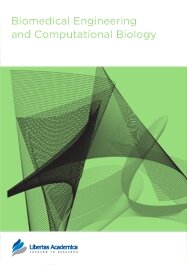

Publication Date: 02 Jul 2013
Type: Original Research
Journal: Biomedical Engineering and Computational Biology
Citation: Biomedical Engineering and Computational Biology 2013:5 57-68
doi: 10.4137/BECB.S11800

Breast reconstruction is an important part of the breast cancer treatment process for many women. Recently, 2D and 3D images have been used by plastic surgeons for evaluating surgical outcomes. Distances between different fiducial points are frequently used as quantitative measures for characterizing breast morphology. Fiducial points can be directly marked on subjects for direct anthropometry, or can be manually marked on images. This paper introduces novel algorithms to automate the identification of fiducial points in 3D images. Automating the process will make measurements of breast morphology more reliable, reducing the inter- and intra-observer bias. Algorithms to identify three fiducial points, the nipples, sternal notch, and umbilicus, are described. The algorithms used for localization of these fiducial points are formulated using a combination of surface curvature and 2D color information. Comparison of the 3D co-ordinates of automatically detected fiducial points and those identified manually, and geodesic distances between the fiducial points are used to validate algorithm performance. The algorithms reliably identified the location of all three of the fiducial points.
PDF (1.69 MB PDF FORMAT)
RIS citation (ENDNOTE, REFERENCE MANAGER, PROCITE, REFWORKS)
BibTex citation (BIBDESK, LATEX)
XML
PMC HTML

As a peer reviewer for Environmental Health Insights, I have had the opportunity to read several very important research articles in my field. Based on my experience, the submission process, review standards, and publication expectations are rigorous and demanding as other high impact journals. I look forward to further reviewing papers for Environmental Health Insights and learning from my peers and other leaders in the field.
Facebook Google+ Twitter
Pinterest Tumblr YouTube